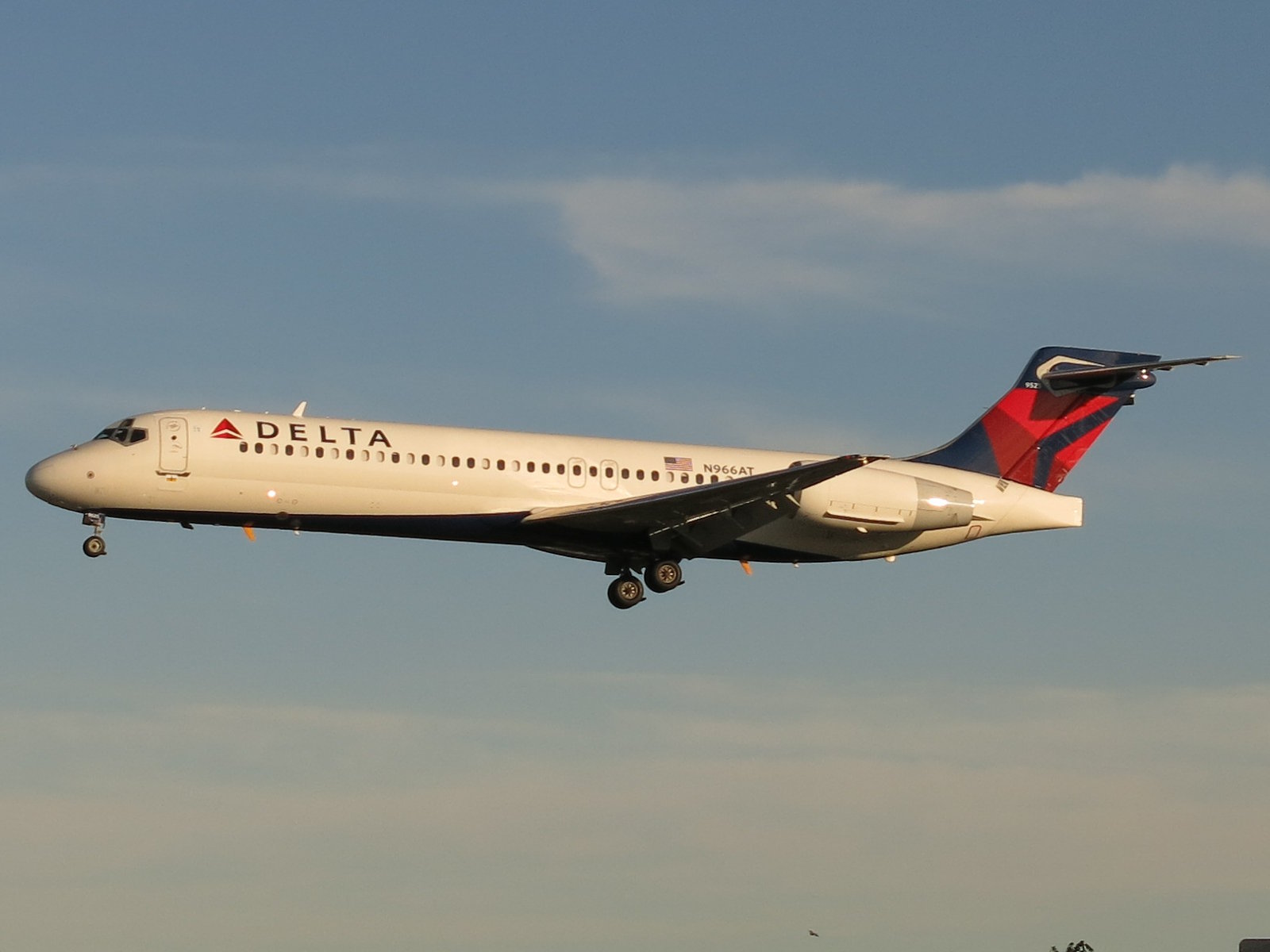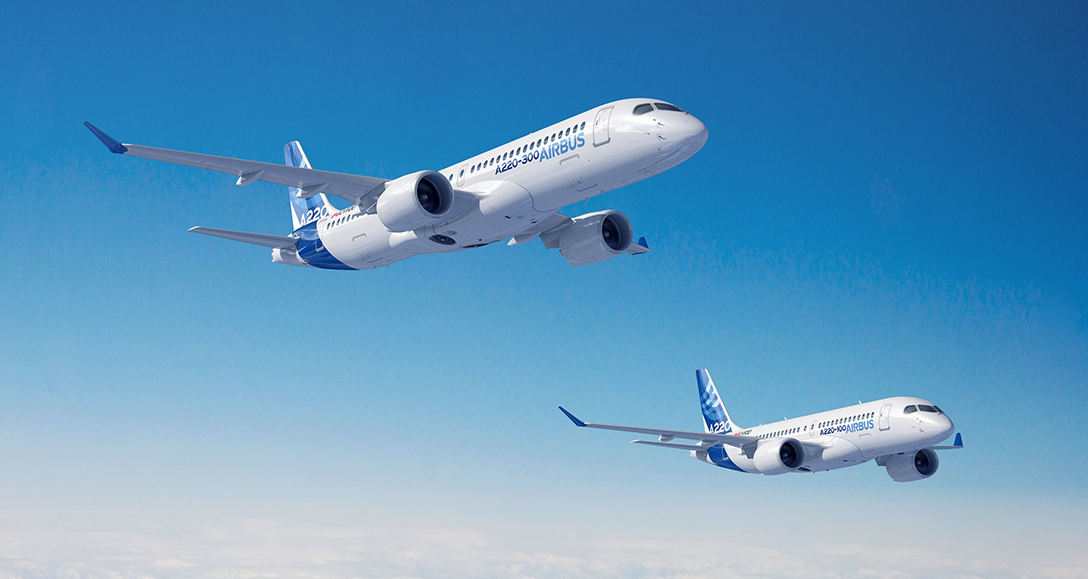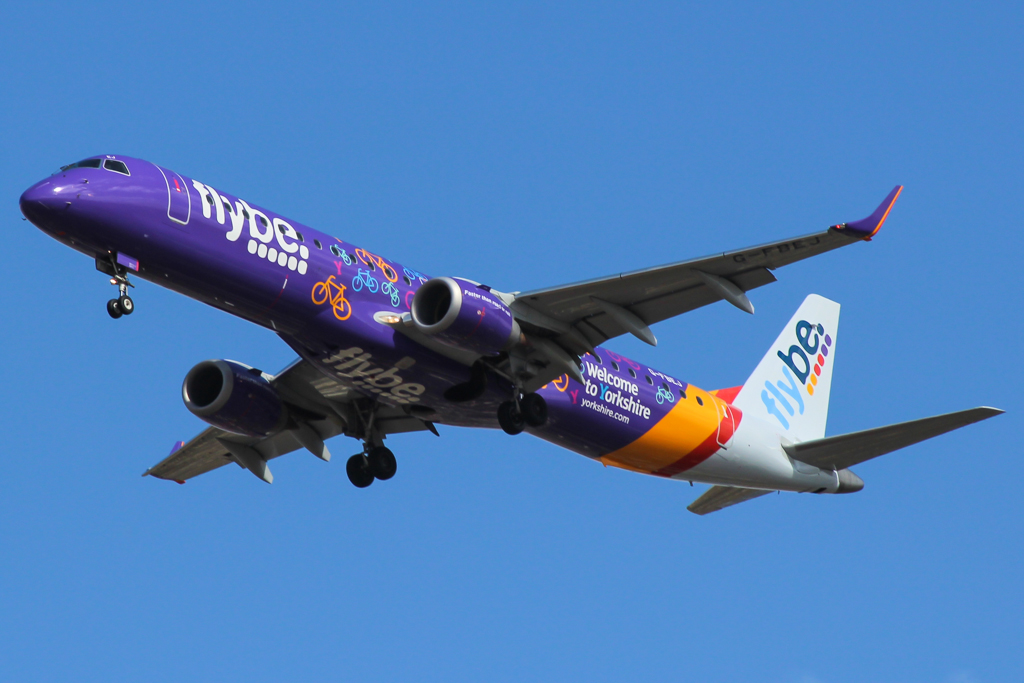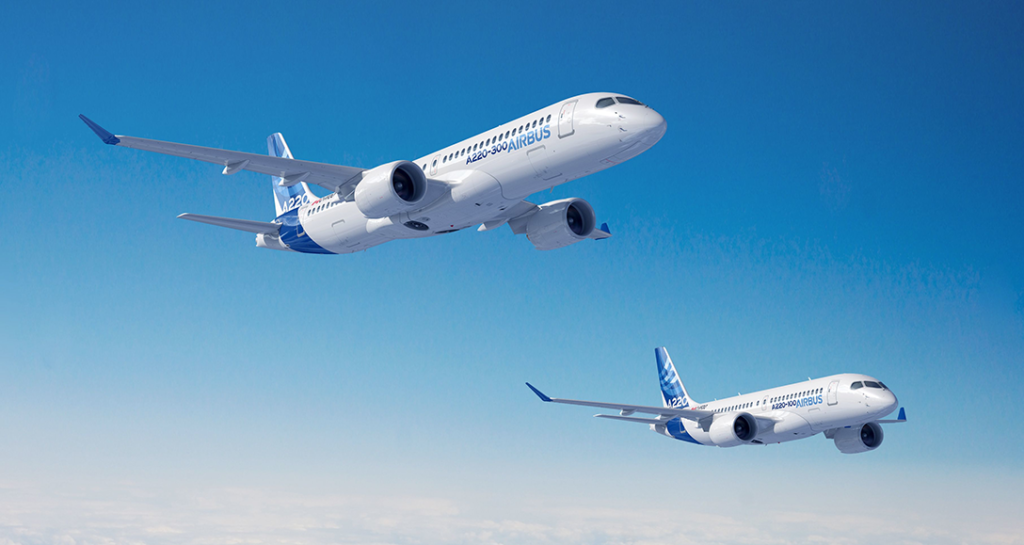Leeham News and Analysis
There's more to real news than a news release.
 Leeham News and Analysis
Leeham News and Analysis
- Bjorn’s Corner: New engine development. Part 5. Turbofan design problems April 26, 2024
- Airbus 1Q2024 results: Airbus CEO: “A350 in-service experience drives positive reputation and orders” April 25, 2024
- A350-1000 or 777-9? Part 3 April 25, 2024
- Boeing CEO promises company is turning around…again April 24, 2024
- Solid start for stand-alone GE Aerospace despite cuts to LEAP output April 23, 2024
Are the world’s regional airlines dying?
Subscription Required
By Scott Hamilton
June 17, 2023, © Leeham News: Is the regional airline market across the globe dying?
Many think so. Certainly, the market demand for the regional jet is shrinking in the 10- and 20-year market forecasts. Bombardier withdrew from the market as demand for its aging CRJ family shriveled. Mitsubishi Heavy Industries killed its RJ SpaceJet program as delays and development costs mounted. Bombardier also exited its turboprop airliner business. ATR is now the sole producer of large turboprops outside China and Russia.
Embraer is now the sole producer of regional jets outside of China and Russia, and it doesn’t even want to call the E-Jet a regional airliner.
Regional airlines in the US face a continuing and growing shortage of pilots. Those in Europe face pressure from environmentalists to the governments to ban short-haul flights in favor of trains.
Despite these challenges and the conclusions of some that the regional airline business is dying, regional carriers take exception to these conclusions.
One regional airline official even took exception to the CEO of Delta Air Lines, who concurred with the dead-and-dying trend.
Speaking at the Aviation Week MRO Americas conference in April in Atlanta, Ed Bastian noted that Delta began trending away from regional carriers many years before.
Posted on June 17, 2023 by Scott Hamilton
The Airbus A220-500, a deep-dive analysis: The launch date challenge
Subscription required
By Bjorn Fehrm and Vincent Valery
Jan. 30, 2023, © Leeham News: In the previous articles, demand in the Airbus A320 family gradually shifted from the smaller A319 and A320 to the larger A321. This shift is laying the groundwork for the arrival of the A220-500.
Airbus can develop the A220-500 with relatively minor technical modifications that are not extremely challenging. In an aircraft performance analysis, we saw that the light aircraft weight gave the A220-500 an advantage against the A320neo and 737-8.
What is then preventing Airbus from launching the A220-500 now? While most of the attention has been on the cannibalization risk with the A320neo and the lack of urgency given Airbus’ market share lead, other and more critical factors, in LNA’s opinion, are at play.
Being an aircraft OEM is not just about designing airplanes that meet payload-range requirements and satisfy stringent safety regulations. It is also about efficiently building aircraft with millions of parts and consistent production rates. The recent challenges OEMs are facing ramping up after the Covid-19 pandemic show that aircraft production is far from a walk in the park that can be taken for granted.
It is common for aircraft OEMs to spend as much cash nursing production through the learning curve until the first profitable delivery as developing the aircraft itself.
The final article on this A220-500 series discusses why Airbus is rightfully cautious about launching the new variant.
Summary
- Current planned A220 production rates and variants can satisfy demand;
- Adding the A220-500 brings the program to a new demand level;
- Several clients would place large A220-500 orders;
Posted on January 30, 2023 by Bjorn Fehrm
The Airbus A220-500, a deep-dive analysis, Part 2
Subscription required
By Bjorn Fehrm
Jan. 23, 2023, © Leeham News: Following Thursday’s article about an up-and-coming Airbus A220-500, we now look at the operational cost for the A220-500 and compare it with the A320neo it should replace.
We put the data we discussed in Thursday’s article in our Aircraft Performance and Cost model, fly the aircraft on a typical single-aisle mission and look at the results.
Summary:
- The A220-500 would be a viable replacement for an A320neo.
- With the changes/improvements we discussed, it beats the A320neo on operational costs. The differences are not of the speculated level, however.
Posted on January 26, 2023 by Bjorn Fehrm
The Airbus A220-500, a deep-dive analysis
Subscription required
By Bjorn Fehrm
Jan. 20, 2023, © Leeham News: It’s a question “of when, not if” there will be an A220-500, we conclude in Tuesday’s article.
We have known about the -500 since the Bombardier days. A longer CS300 was part of the original concepts when the CS100 and CS300 were developed to safeguard that no decision on the smaller variants precluded a larger variant.
As Airbus A321 grows its share of the A320 lines’ output, an A220-500 makes sense, but only when the two A220 final assembly lines in Mirabel and Mobile can produce enough A220s to satisfy demand.
What would be the characteristics of an A220-500? We use our aircraft design and performance model to determine what is possible.
Summary:
- The Airbus A220 has the base capabilities for a stretch to an A220-500.
- Some changes/improvements are needed, but these are limited to detailed changes beyond a fuselage stretch.
Posted on January 19, 2023 by Bjorn Fehrm
The 717 and A220, Part 2: Operational economics comparison
Subscription Required
By Bjorn Fehrm
Introduction
December 10, 2020, © Leeham News: Last week, we introduced the Boeing 717 and its closest replacement size-wise, the Airbus A220-100. Delta, a major 717 customer, is accelerating the replacement of the 717 with the A220-100 under the pressure of the COVID19 pandemic.
We use our performance model to understand why. What are the gains when going from the 717 to an A220-100?
Summary
- The 717 version of the DC-9 architecture produced a rugged and well-liked short-haul airliner. It’s five abreast cabin is preferred over the six-abreast Boeing 737 and Airbus A320.
- It’s size-wise in the same 115 seat bracket as the 15 years younger Airbus A220-100. It’s 40 years old airframe architecture holds up well compared to the modern A220.
- The engines of the two are also 15 years apart. But the Rolls-Royce BR715 of the 717 was originally designed to fly on fast business jets, necessitating a low by-pass ratio design. This is a handicap when used on lower speed airliners. It shows against the high bypass ratio Pratt & Whitney PW1500G of the A220.
Posted on December 10, 2020 by Bjorn Fehrm
Airbus integrates the last pieces of the CSeries from Bombardier
September 3, 2020, © Leeham News: Airbus and its subsidiary Satair announced today it has integrated one of the last pieces of Bombardier’s engagement with the A220, the spare parts distribution.
Airbus acquired Bombardier’s part of the A220 aircraft program in January, but Bombardier continued to purchase, stock, sell and distribute the A220 spare parts. From the 1st of July, this is handled by Satair, part of the Airbus group, to give airlines with Airbus aircraft a single point of contact for spares part services.
Posted on September 3, 2020 by Bjorn Fehrm
European Regionals Face Hostile Operating Environment
Subscription Required
By Kathryn B. Creedy
Third in a Series. Previous articles:
- The future of regional jets is limited by choices, Scope Clause
- US Regional Consolidation Began Before Covid
Introduction
Aug. 31, 2020, (c) Leeham News: European regionals face far greater challenges than Covid and, sadly, much of what is happening to the industry is beyond its control. The result is similar to failures seen in the U.S. Flybe’s recent loss resulted from pre-Covid problems which also led to the pre-Covid failures of such airlines as Flybmi and Cobalt.
The failures illustrate, however, the three reasons why European regionals are so fragile – low-cost competition, geography, and challenging government policy.
Summary
- Government Policies Hardest on Regionals
- LCC Competition Challenging
- Consumer Protections Crushing
- Turboprops Have Large Role
Posted on August 31, 2020 by Kathryn Creedy
Airbus, Airlines, ATR, Boeing, Bombardier, Coronavirus, COVID-19, CSeries, E-Jet, Electric Aircraft, Embraer, European Regions Airline Association, European Regions Airlines Association, Mitsubishi, Pratt & Whitney Canada, Premium, Regional Airlines, SpaceJet
aircraft, airlines, aviation, flight, full-service carriers, low cost carriers, regional airlines
What’s the gain of flying a smaller single-aisle during COVID-19 recovery?
By Bjorn Fehrm
Subscription Required
Introduction
May 28, 2020, © Leeham News: As flying recommences after country lockdowns, the fill factors for the flights will be low for an extended period.
Airlines and the OEMs are anticipating the low load factors. For instance, Delta has not deferred any Airbus A220 deliveries but is postponing deliveries of larger aircraft. How much of an advantage is a smaller aircraft when opening up the traffic again?
We compare the operational costs of the Airbus alternatives. The cost of flying the A220-300 is compared with the A320neo.
- The A220-300 is about 25 seats smaller than the A320neo. It’s smaller airframe makes for lower fuel costs and airway/landing fees.
- There are savings on the crew side as well, as both flight and cabin crew costs less.
- Finally, modern systems, a composite wing, and a fuselage made of advanced materials promise lower maintenance costs than the A320neo.
Posted on May 28, 2020 by Bjorn Fehrm
How much did the CSeries cost Bombardier?
By Bjorn Fehrm
Subscription Required
Introduction
February 20, 2020, © Leeham News: As we wrote in last week’s article about the A220 flying the Montreal to Toulouse route, the stakes are high in the civil airliner business. If you don’t have a very strong balance sheet you shouldn’t enter the business.
Bombardier learned this the hard way. Its follow up project to its successful CRJ regional jets, the CSeries, brought Bombardier to the brink of bankruptcy and it had to sell the project to Airbus at a fraction of its value. The project cost more to develop and produce than planned despite not running off the rails during development like Boeing’s 787 or Mitsubishi’s MRJ.
We analyze why it cost so much and at what fraction Airbus got the program.
Summary:
- The CSeries nearly doubled its development costs despite being void of major hiccups. What was the cause?
- Airbus picked up the program when Boeing forced Bombardier to sell. How much of a bargain did Airbus get?
Posted on February 20, 2020 by Bjorn Fehrm
Airbus buys Bombardier’s share in A220, now sole owner together with the Government of Quebec
By Bjorn Fehrm
February 13, 2020, © Leeham News in Toulouse: The news this morning that Airbus is now the sole owner of the A220 (75%) together with the Government of Quebec (25%) is good news for the A220 and for Quebec.
Bombardier is a company in trouble and it was forced to try and save cash in the A220 partnership rather than invest in the future. This potential limitation on the A220 program is now resolved. Airbus gets sole responsibility for future plans and it has in the Government of Quebec a partner that will be positive to the growth of the A220 as it means more business for the Quebec aeronautical industry.
Posted on February 13, 2020 by Bjorn Fehrm
Email Subscription
Twitter Updates
My TweetsAssociations
Aviation News-Commercial
Commentaries
Companies-Defense
Resources
YouTube
Archives
- April 2024
- March 2024
- February 2024
- January 2024
- December 2023
- November 2023
- October 2023
- September 2023
- August 2023
- July 2023
- June 2023
- May 2023
- April 2023
- March 2023
- February 2023
- January 2023
- December 2022
- November 2022
- October 2022
- September 2022
- August 2022
- July 2022
- June 2022
- May 2022
- April 2022
- March 2022
- February 2022
- January 2022
- December 2021
- November 2021
- October 2021
- September 2021
- August 2021
- July 2021
- June 2021
- May 2021
- April 2021
- March 2021
- February 2021
- January 2021
- December 2020
- November 2020
- October 2020
- September 2020
- August 2020
- July 2020
- June 2020
- May 2020
- April 2020
- March 2020
- February 2020
- January 2020
- December 2019
- November 2019
- October 2019
- September 2019
- August 2019
- July 2019
- June 2019
- May 2019
- April 2019
- March 2019
- February 2019
- January 2019
- December 2018
- November 2018
- October 2018
- September 2018
- August 2018
- July 2018
- June 2018
- May 2018
- April 2018
- March 2018
- February 2018
- January 2018
- December 2017
- November 2017
- October 2017
- September 2017
- August 2017
- July 2017
- June 2017
- May 2017
- April 2017
- March 2017
- February 2017
- January 2017
- December 2016
- November 2016
- October 2016
- September 2016
- August 2016
- July 2016
- June 2016
- May 2016
- April 2016
- March 2016
- February 2016
- January 2016
- December 2015
- November 2015
- October 2015
- September 2015
- August 2015
- July 2015
- June 2015
- May 2015
- April 2015
- March 2015
- February 2015
- January 2015
- December 2014
- November 2014
- October 2014
- September 2014
- August 2014
- July 2014
- June 2014
- May 2014
- April 2014
- March 2014
- February 2014
- January 2014
- December 2013
- November 2013
- October 2013
- September 2013
- August 2013
- July 2013
- June 2013
- May 2013
- April 2013
- March 2013
- February 2013
- January 2013
- December 2012
- November 2012
- October 2012
- September 2012
- August 2012
- July 2012
- June 2012
- May 2012
- April 2012
- March 2012
- February 2012
- January 2012
- December 2011
- November 2011
- October 2011
- September 2011
- August 2011
- July 2011
- June 2011
- May 2011
- April 2011
- March 2011
- February 2011
- January 2011
- December 2010
- November 2010
- October 2010
- September 2010
- August 2010
- July 2010
- June 2010
- May 2010
- April 2010
- March 2010
- February 2010
- January 2010
- December 2009
- November 2009
- October 2009
- September 2009
- August 2009
- July 2009
- June 2009
- May 2009
- April 2009
- March 2009
- February 2009
- January 2009
- December 2008
- November 2008
- October 2008
- September 2008
- August 2008
- July 2008
- June 2008
- May 2008
- April 2008
- March 2008
- February 2008









